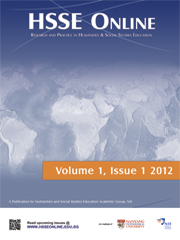Janet Alleman (Michigan State University)
Keywords
Social Studies
Primary School
Assessment
Introduction
Just when the tendency to ‘measure’ entered education and the schools is not definitely known. We do know, however, that even early teachers including Socrates challenged their students with carefully prepared questions which undoubtedly were used to determine students’ intellectually capacity and abilities to exercise higher order thinking. No outstanding advancements in educational measurement were reported until about the middle of the nineteenth century. By the 1920s, quantitative measurement appeared in literature associated with educational tests and a little later the quality of tests became a part of the conversation. In 1922, the first edition of the Stanford Achievement Test was published. Initially the emphasis was on mastery, however, later attention was directed toward student strengths and weaknesses and the use of data for enhancing the learning process (Loeck, 1952).
Now fast forward to 2012. The discourse about assessment and testing has exploded, primarily due to standards and high stakes testing with a dramatic shift from almost exclusively student performance and accountability to include teacher performance and accountability. In some school districts, teachers have lost their jobs due to poor student performance and in other instances teachers’ salaries are determined, in part, by student performance. While this article will not enter the debate about where the emphasis should be or who is to be praised or blamed, this author advocates a balance and argues that attention to student ongoing assessment correlates with teacher performance if the assessments are multi-facets and aligned with curricular goals and if the results are used to inform planning and modify instruction.
Assessment: Integral Part of the Learning Cycle
Imagine assessment as an integral part of the learning cycle that takes multiple snapshots of each student. The teacher needs a host of data types in order to create a profile of each learner. Think of the profile as telling a story of each student – his/her assets/successes as well as areas that need attention. While the renewed interest in assessment seems to be based on the onslaught of standards and standardized tests, it behooves the teacher to avoid this narrow perspective and instead seize this opportunity to rethink assessment within the content of curricular goals. Consider it in terms of its potential for determining students’ progress in learning, for curricular improvements, for instructional planning, and for grading.
Assessment should be a natural part of teaching and learning with the student in the loop and acquiring skills to self-monitor. Assessment should be ongoing, frequently cast as preliminary formative, and summative. Different forms and times for assessment should be determined according to the purpose of the learning situation, the kind of information sought, and how the assessment will be used to accomplish the subject’s goals. Since assessment is ongoing, many instructional activities can be used as assessment tools. The key is for the teacher to realize the difference between using an activity for teaching (processing information, etc.) and for “testing” a student’s performance.

